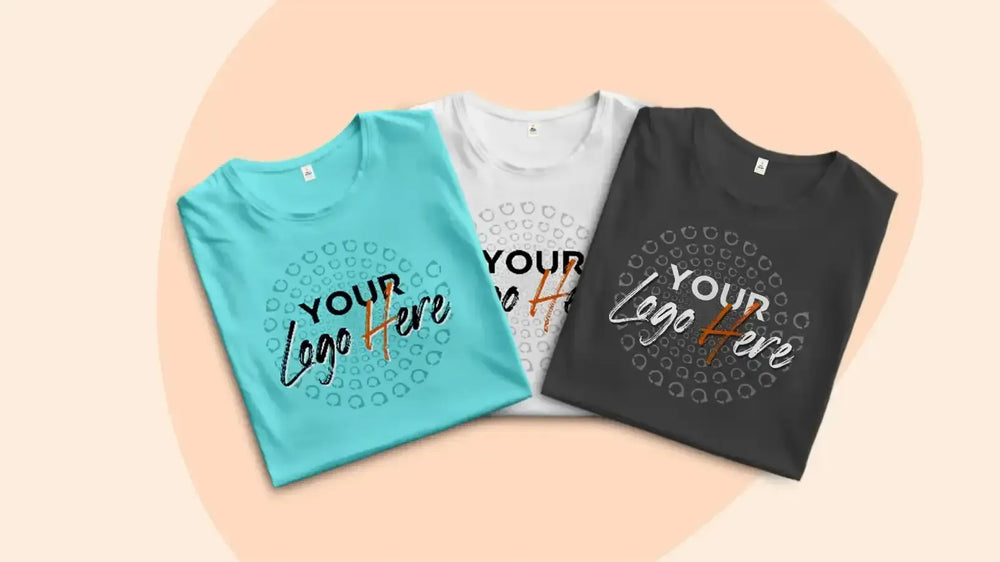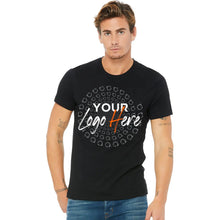What is heat transfer printing?

Heat Transfer printing is a reliable printing technique used by printing companies for commercial and individual custom printing orders. Also known as thermal printing, thermal-transfer printing, and thermal-wax transfer printing, the printing technique offers quality results and is cost-effective. The printing technology is being used frequently and in this post, we are explaining all the aspects of the printing method to ensure that you have a detailed understanding before you proceed.
This guide includes the history of the printing technique, various steps included in the process, as well as the pros and cons of choosing thermal printing or heat transfer printing methods over other printing methods.
Let us continue further and answer your doubts to ensure your heat transfer printing order at Custom One Online offers you the expected results.

History of Heat Transfer Printing:
As soon as polyester became the new favorite fabric, there was a need for a more effective and quality-oriented printing technique and thus heat transfer printing was first invented. The process was very intricate and printed patterns on the paper with some selective dyes. The paper, also known as the design stencil, is then placed on the fabric and the design is finally transferred to the fabric.
In the beginning, the use of heat transfer printing was limited to novelty items only. People orders polyester tops and t-shirts and the results were commendable. The practice has today evolved significantly and now the technique is one of the prime printing tech used by textile and manufacturing industries.
The Process Steps of Heat Transfer Printing:
If you want to transfer your custom logos or designs on the apparel beautifully, choosing heat transfer printing is an excellent method. The process of transferring the print to a paper and then from the paper to the fabric is exemplary. There are different ways to perform the heat transfer process including inkjet transfers, dye sublimation transfers, digital appliqué transfers, and vinyl transfers. There are several steps involved in each one of the processes and in this section, we will discuss each one of these steps in detail.
1- Gather the necessary supplies
You will need a handful of items as well as advanced machinery for effective heat transfer printing. Some core supplies required during the procedure include:
- Computer
- Printer
- Ink
- Heat Transfer Paper
- Cutter
- Heat Press
- Heat Pads
- Heat tape
- Heat resistant sheeting
- Substrates & more
2- Creating the design
The second step of the process is to create the design. At Custom One Online we offer you choices to choose a template, submit your own designs or create a design with the help of a pro designer from our team.
3- Printing the design
The final design is then printed on a special heat transfer paper for further process. We use three different types of ink including inkjet ink, pigment ink, or sublimation ink and the selection is made based on the product and application.
4- Cutting the design
In this step, the design is cut using a vinyl trimmer. However, this step is not used in all processes.
5- Warming up the heat press
Warming the heat press is a critical step and must be done very efficiently. E press is first opened and the heat platen is removed from the heat pad. The heat platen and pad are placed open as it warms up. Usually, the ideal templates for the heat transfer printing process is between 350-375F.
6- Adjusting the pressure
Depending upon the thickness of the fabric, the pressure of the press is adjusted. If the fabric is thicker, it needs lesser pressure. In most cases, medium or high pressure is used on different types of fabrics.
7- Setting the time
Depending upon the type of the heat transfer process, the rime caries significantly. The common time guide is as follows:
- For Inkjet Transfer Paper the timing is 14-18 seconds.
- For Dye Sublimation Transfer the timing is 25-30 seconds.
- For Digital Applique Transfer the timing is 20-30 seconds.
- For Vinyl Transfer the timing is 45-60 seconds.
8- Setting the substrate and transferring in place
The product is now positioned on the plate and the design paper is placed on the right location at the pressing area. In the case of Vinyl transfer, the paper is covered with a thin cloth to protect the design.
9- Pressing the product
As your pressing machine is fully set by this time, you can now pull the handle or press the start button to press the design against the fabric.
10- Removing the film
There is a timer on the press, wait for it to go off and then open the press. Now remove the film. At this time your transfer paper will be hot and the design will be transferred onto the [product, just like you wanted it to be.
Advantages & Disadvantages of heat transfer printing
As more and more colors are added to the spectrum of heat transfer printing, the printing method has gained great popularity. The technology, much like other printing techs has its own pros and cons which are discussed at length below:
Advantages of heat transfer printing
It saves resources (time, money and effort):
The biggest benefit of this process is that it’s very easy and affordable, manufacturing companies save a lot of time, effort, and money by choosing Heat transfer printing.
Ideal for small orders:
Because making the design and printing it on paper and then to the fabric is easier, it is the right printing technique for small orders.
On-demand printing:
The printing service providers can take and fulfill on-demand printing orders and cater to their client’s requirements.
No color restrictions
The customer can choose whatever color they want and get the desired design printed on the fabric.
Diversity:
The printing techniques work for fabric painting and hence it is recommended for custom apparel printing. However, it also offers excellent results on surfaces like cups, plates, and jigsaw puzzles.
No mess:
The biggest benefit of using heat transfer printing is that the technology is not messy like many other printing techniques.
High-quality results:
The final results from a premium pressing machine are exemplary, the modern machines are able to print complex, vivid, and full-color Pictures & designs.
Disadvantages of heat transfer printing
Not ideal for large orders:
Because the design needs to be trimmed every time it is printed and the paper is to be removed, there is a lot of work to be done each time you print apparel.
The print fades:
Although it does not happen every time, print fading is an issue with heat transfer in certain cases.
You cannot iron the print:
When ironing the t-shirt, even a small run of the press over the print can ruin the design.
FAQS about Heat transfer printing
- What is the best type of press for heat printing?
For a DIY, one-time heat transfer project, you can use the iron at home. But, if you are doing t commercially, you must invest in a branded heat transfer press. The efficiency of the process allows even and high-quality application and ensures that the design does not wear off after a few washes.
- Are there different types of heat applied transfers?
Yes, there are different types of heat applied transfer techniques and the selection varies from one company to another the common options include screen printed transfers, full-color digital transfers, and rhinestone transfers.
- What is Vinyl heat transfer?
In Vinyl heat transfer, a special kind of Vinyl polymer is used to create designs on certain fabrics. It is a trusted printing technology for making personalized t-shirts, jerseys, accessories as well as other promotional stuff.
- What are the wash instructions for Heat Vinyl Printing?
It is recommended to not dry clean the Heat transfer printed garment. Also, the garment must be washed inside out to protect the print. Using mild detergent is the best way to safely wash HTG prints.
- What are the common problems with the Heat transfer Printing method?
Some common issues include:
- The transfer not sticking to the fabric.
- The print getting wrinkled after washing.
- Cracking is another problem.
- You cannot iron on the print even accidentally as it will cause serious damage.
- Does HTP design cracks fast?
No, not always, a heat transfer printing design does not crack fast until and unless there are issues with the printing. Inappropriate heat and temperature can compromise the quality of the print. At Custom One Online, we pay a lot of importance to the print design and hence it does not crack.
At Custom One Online, we are the most trusted custom apparel printing online studio. We specialize in Heat Transfer printing along with other printing techniques such as screen printing and direct-to-garment printing. We have successfully handled several Heat transfer printing orders and are the product of the quality delivered.
If you are all set to print a fabulous custom t-shirt using heat transfer printing technology, place your orders now!


















